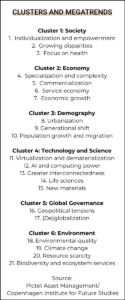CalPERS may be reeling from another CIO departure following Nicole Musicco’s decision to leave after less than 18 months but it was business as usual at the $463 billion fund’s latest investment committee meeting. Convened a few days after her resignation to spend more time with her family in Toronto, board and staff discussed key factors shaping the $209 billion equity portfolio, CalPERS largest allocation, proof of how the systems and processes driving the giant battleship grind on despite turmoil at the top.
A key focus in the coming months will be analysing the utility of the factor weighting in the public equity portfolio which is divided between (73 per cent) cap weighted and (27 per cent) factor weighted strategies.
Although the $55.4 billion factor strategy has persistently performed in line with expectations, the team plans to look at the merits of a portfolio that was set up in 2017 through today’s prism of higher interest rates. Analysis will explore to what extent the factor weighted allocation has been a drag since it was put into the portfolio, and the extent to which the fund needs a factor weighted allocation today.
“The returns that it has delivered to date match the purpose,” Simiso Nzima, managing investment director, global public equity told the board. “The factor weighted portfolio has a beta of 0.7 so if the cap weighted portfolio is up 10 per cent, the factor weighted segment will be up 7 per cent. Its performing in line with expectations but it is really a question of whether we still have the same utility. It was put in place when the funded ratio was 68 per cent and concern that if the stock market went down, the funded ratio would fall too.”
“When the portfolio was set up rates were much lower. Now rates have gone up there may be other ways to get diversification,” added Dan Bienvenue who will step in as interim CIO following Musicco’s departure at the end of the month, just as he did when her predecessor, Ben Meng, resigned in August 2020. He told the board that the factor allocation is already being steadily reduced.
Any reduction in factor exposure could be offset by an increase in active equity investment. CalPERS has successfully built out its active allocation to enhanced index and active strategies (from 8-16 per cent) and the board heard how the fund plans to deploy additional capital to active investment to diversify the book. The vast bulk of the portfolio (84 per cent) is in index strategies.
However, any boost to internal active management would have to be accompanied by an increase in the internal team. Around 94 per cent of the equity portfolio is internally manged and adding internally-run active management strategies would require a bigger headcount and additional resources, the board heard.
Boosting active risk was one of Musicco’s key goals. During her tenure she sought to have actively manged strategies run by external managers in a culture change at CalPERS.
Nzima also warned that successful active investment could be stymied by narrow market breadth. He said the outsized dominance of large companies in equity performance can be negative for active investment because it makes picking winners more difficult. He said seven stocks have driven 2022-2023 returns, between them contributing 50 per cent of returns. Key equity risks ahead include the lagged impact of higher interest rates on economic activity, geopolitical uncertainty and elevated valuations in some segments of the markets, he added.
engagement on exec pay
CalPERS’ public equity team have a renowned voting track record, seeking to effect corporate change in line with the pension fund’s ESG beliefs around board composition, climate change and human capital management. CalPERS is also one of the few US public pension funds engaging with investee companies on executive pay. However, the board heard that effecting change around executive pay is challenging, particularly because only a handful of other European funds engage on the issue.
Average CIO pay levels at S&P500 companies continue to track higher – an S&P500 CEO will earn on average $15 million in salary, bonus and equity a year. CalPERS has voted against 49 per cent of say-on-pay proposals in FY 22-23 – “against” 1,392 compensation committee members, holding them accountable for poor pay-for-performance alignment.
“Despite our best efforts, pay is creeping up,” said Drew Hambly, investment director at CalPERS.
“You have to wonder why employees want 40 per cent raises,” said Theresa Taylor, serving her third term on the CalPERS Board of Administration and her second one-year term as president of the board. She also paid homage to Musicco’s achievements at the helm. “I’m really sorry to see you go. People don’t recognise the challenges women face in these big roles.”
In an event driven engagement strategy that sees staff monitoring ESG issues and taking action as they occur, CalPERS has engaged with companies on issues like child labour and freedom of association. For example, staff contacted 12 portfolio companies (represented market value of $9.5 billion) following recent allegations of child labour issues. The companies blamed third party labour providers with poor labour practices.
“Our efforts have born fruit,” Hambly said.
CalPERS uses vendors to track and flag issues on which to engage, but has a limited team on the ground to follow up with engagement. It has 6000 companies in the entire portfolio and currently targets engagement with around 800 in the equity portfolio.
“We are not getting to everyone but feel strongly that the most significant names getting good coverage,” concluded Hambly, who said the five-member team is highly skilled and experienced.
